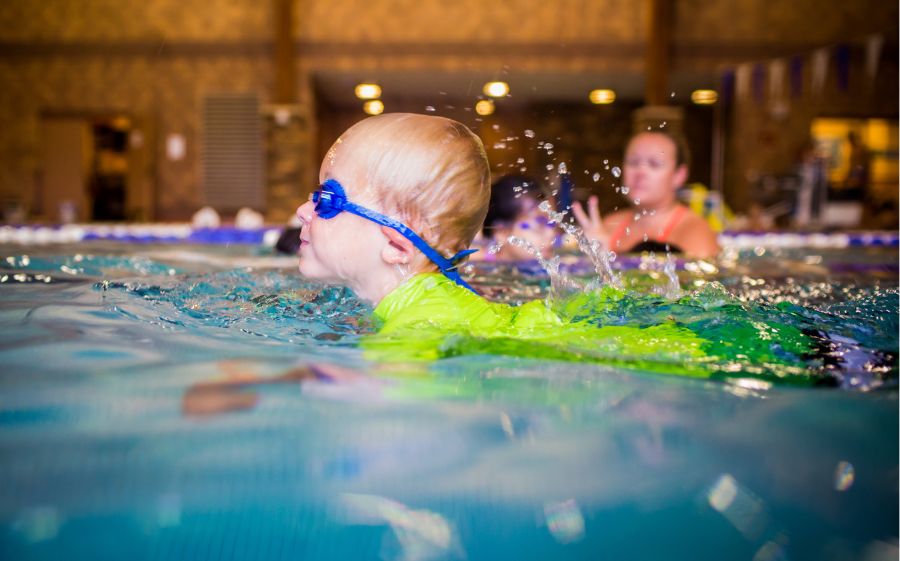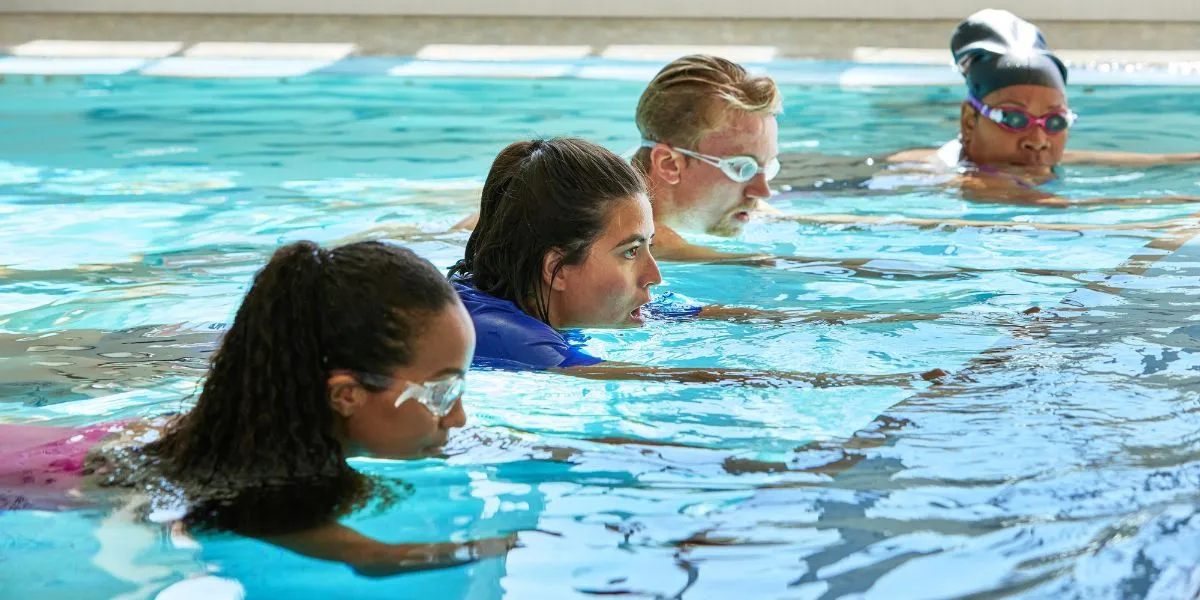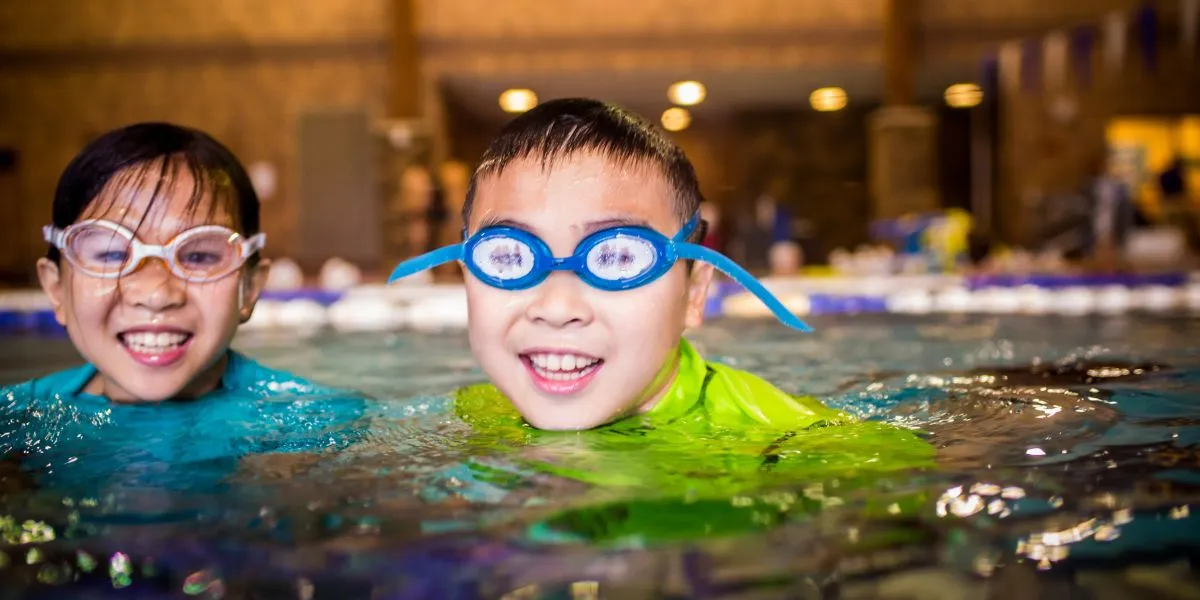
Published: 03/14/2023 - 8:00 AM
Swimming is a fun way to spend a summer afternoon while encouraging various health benefits like improving your mood and decreasing the risk of certain health conditions. While swimming may look exciting, it can be scary for children and adults who aren't accustomed to the water. The activity requires full-body strength, proper breathing techniques and coordination skills to move confidently.
For anyone interested in learning how to swim, here are a few basic swim techniques every child and adult should know to feel happy, comfortable, and safe in the water.
1. Getting in and Out of the Water Safely
While it may seem easy for adults, entering and exiting a pool safely is one of the first basic swimming skills a child should learn. They can avoid injury and build confidence by learning how to sit and slowly move into the water. Most importantly, they should know how to quickly get themselves out of the pool, whether that's using the steps or pulling themselves up and out in areas where ladders aren't available. Ensure your child is strong enough to exit a pool independently or aid them until they can accomplish the skill independently.
2. Proper Breathing
For small children, the idea of putting their heads underwater and not being able to breathe can seem quite scary. While often overlooked, proper breathing is among the most crucial swim skills everyone needs to survive in water. You can help your child gain confidence and enjoy swimming by helping them control their breathing without swallowing. Adults and kids can learn proper swimming breathing techniques with the following steps:
- Stand in chest-deep water, facing the wall of the pool.
- Place your hands on the pool edge.
- Bend over at the waist, breathe in and place your face in the water.
- Slowly but forcefully blow out the air in your lungs through your mouth and nose.
- Tilt your head to one side as you exhale toward the water's surface.
- When your mouth emerges above the water, inhale.
- Repeat the exercise, reaching to the right and then to the left side.
When moving forward in most swimming strokes, the trick is to breathe out from the nose and mouth when your head is underwater and then be able to lift your head out of the water to take a full breath before putting your head back underwater. Learning to time your breaths with your strokes will prevent you from breathing your rhythm and tiring yourself out. It will also help you make faster, more coordinated movements in the water.
3. Floating
Learning how to float and tread water is essential. If you accidentally fall in the water or cannot make it to the edge of the pool, knowing how to float or tread water can help you until someone comes to help.
Floating on your back is usually easiest. When teaching children to float, stay in waist-deep water and support them from their backs until they can float on their own. For adults, it's easier to learn to float in chest-deep water, but be sure to have someone there to support you if you need it.
When treading water, the trick is moving the legs in a bicycle motion while holding the arms out and rotating them with cupped hands. As children become stronger in the water, treading and floating become essential skills to help them swim independently. These techniques make them safer and boost their confidence in the water.
4. Coordinating Limbs
All body parts must be coordinated as you're swimming. You should be able to move your lower back muscles, abdomen and hips in a synchronized fashion to keep swimming forward, with your hands cutting through the water first, followed by your elbows and then your body.
Beginner swimmers often chop through the water with all limbs, as it takes time to get a feel for how your limbs should be moving. It also takes time to get used to moving your lower back muscles, hips and abdomen to power you forward. Learning these basic swimming techniques will ensure you can coordinate your limbs to keep your head above water and start building your swimming skills.
5. Kicking
Learning how to kick is also an essential skill if you want to master swimming. Kicking is a basic foundation for many more advanced swimming movements. Beginner swimmers can practice their kicking by taking hold of the side of the pool, letting their body float up and kicking while keeping their upper body above the water. You might also use a kickboard to support the body as you get used to kicking and moving forward in the water.
Once you've mastered kicking, it will be easier to incorporate more coordinated swimming movements, such as strokes.
6. Basic Swimming Strokes
Once you've mastered the basic swimming skills, you can try some easy strokes. The front crawl or freestyle stroke is ideal since it offers a stable, gentle movement suitable for beginners. It's a popular and versatile stroke that can also build and tone your muscles.
To do the front crawl, follow these steps:
- Start on your stomach with both arms stretched to the front, legs extended back and head up.
- Keep your head down and only turn to take a breath.
- Kick your legs continuously at the hips while alternating, keeping toes pointed and ankles relaxed, with the knees bent slightly.
- Extend one arm forward to catch the water, with the palm facing down.
- Breathe out as your arm pulls down through the water, and as it does so, lift and repeat the motion with your other arm.
Each part of this stroke should complement the other while keeping your body balanced and streamlined. Once you've mastered the front crawl, you'll be able to glide through the water with ease. Other beginner strokes include the sidestroke, butterfly and backstroke.
Learn How to Swim in the Greater Philadelphia Area at the YMCA
After mastering these basic swimming skills, you can feel safer and enjoy your time in the pool this summer. It's an excellent sport for all ages and abilities, offering various health benefits. To learn swimming, take advantage of the YMCA's swim lessons and recreational offerings in the Greater Philadelphia Area.
We offer a wide range of swim classes, including individualized and group classes. Lessons can be tailored to your skill level, so no matter your swimming level, you're bound to find something that fits your needs. When you master the basic swimming techniques, you can also take advantage of our recreational swim offerings.
Find a swim lesson or come to check our open swim schedule today.

